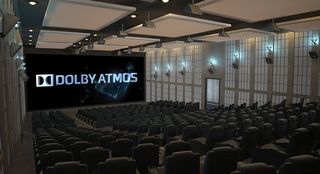Netflix adds Dolby Atmos support, but you probably can't use it yet

It's often said that video streaming services like Netflix, Hulu, Amazon Prime Video and even YouTube focus too much on video enhancements at the expense of audio. As we've moved from 1080p to 4K to HDR to wide color gamut, we've remained stubbornly adherent to audio standards that are approaching 10 or 15 years old.
Netflix wants to change that with the introduction of Dolby Atmos support for some of its titles, beginning with the acclaimed (and reportedly very weird) film Okja.
The requirements to actually experience Dolby Atmos on Netflix are quite restrictive at the moment: it's limited to the Xbox One or Xbox One S (and soon, LG OLED TVs) along with a "4 Screens + Ultra HD" streaming plan and, of course, a compatible receiver and speaker configuration.
Atmos is here, but you may not have the hardware for it yet.
I have admittedly fallen behind the times when it comes to surround sound codecs — the last 5.1 setup I had was probably 10 years ago — so I had to look up exactly how to take advantage of Dolby Atmos the way the company intends, and it's intense. The idea behind the setup is to create a 360-degree soundscape by augmenting a traditional 5.1 or 7.1 surround sound setup with between two and four ceiling speakers or, barring that, upwards-facing satellites.
There are easier ways to get Dolby Atmos, though: the company has worked with a number of companies to add support in a number of phones, headphones and, perhaps most importantly, sound bars that do a decent job emulating the surround experience.
More Netflix titles will get Atmos support in the coming months, including BLAME!, Death Note, Bright, and Wheelman.
Be an expert in 5 minutes
Get the latest news from Android Central, your trusted companion in the world of Android
Daniel Bader was a former Android Central Editor-in-Chief and Executive Editor for iMore and Windows Central.

